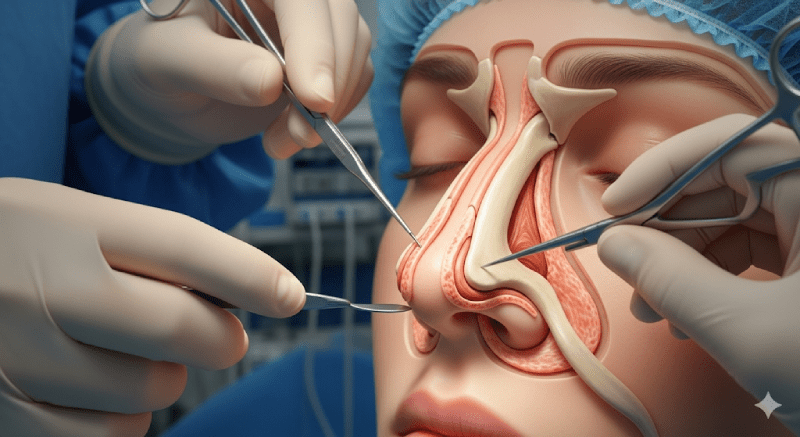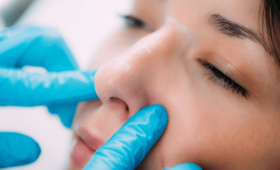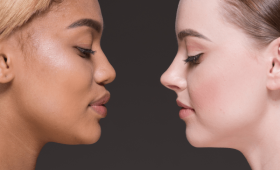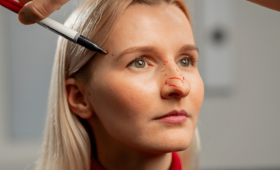What is Revision Rhinoplasty and How Does it Differ from the First Surgery?
Revision rhinoplasty is a secondary surgical procedure performed to correct aesthetic or functional problems in the nose of a patient who has previously undergone a rhinoplasty surgery. This surgery can be more complex than the first one because the surgeon may encounter difficulties such as scar tissue, limited cartilage material, and altered anatomy. While the first surgery generally works on the patient’s natural nasal structure, revision surgery requires making precise corrections on a previously modified structure. This necessitates the surgeon to have a more advanced level of experience and skill.
Why Do People Need Revision Rhinoplasty?
The most common reasons for needing revision rhinoplasty are that the patient is not satisfied with the aesthetic results of the first surgery or that functional problems have arisen. Aesthetic reasons may include the nasal tip being larger or smaller than desired, asymmetry, or a hump or dip on the nasal bridge. Functional reasons include problems such as nasal obstruction and difficulty breathing. In some cases, unexpected reactions during the post-operative recovery process or traumas can also lead to the need for a revision.
Who is the Best Candidate for Revision Surgery?
The best candidates for revision surgery are individuals who understand the reasons for the problems that have arisen after the surgery, have realistic expectations, and are in good physical health. The patient should be able to communicate openly with the surgeon, share the details of their previous surgery, and be informed about the risks and potential outcomes of the revision surgery. Waiting at least one year after the first surgery is crucial for the tissues to fully heal and for the swelling to subside.
How Long Should One Wait for Revision Surgery?
It is generally recommended to wait at least 12 months after the first surgery for revision rhinoplasty. This period is critically important for the nasal tissues to fully heal, for the post-operative swelling to go down, and for the nasal cartilage and bone structure to take their final shape. An early revision can lead to negative outcomes because the tissues are still sensitive and the final result has not yet been determined.
What Factors Affect the Cost of Revision Rhinoplasty in Istanbul?
The main factors affecting the cost of revision rhinoplasty in Istanbul are the complexity of the surgery, the surgeon’s experience and expertise, the quality of the hospital where the surgery will be performed, and the type of anesthesia used. As it is a secondary surgery, it may require more time and special techniques, which can increase the cost. The need for additional materials such as cartilage grafts also plays a determining role in the price.
Is a Closed or Open Technique Used in Revision Surgery?
The open technique is generally preferred in revision rhinoplasty. The reason for this is that it allows the surgeon to see the complex anatomy more clearly and to make the necessary corrections more precisely. The presence of scar tissue left by the first surgery and cartilage deficiencies necessitate the full view provided by the open technique. However, if the problem to be corrected is very minor, some surgeons may prefer to use the closed technique.
What are the Cartilage Sources Used in Revision Rhinoplasty?
In revision surgery, there may not be enough nasal cartilage, in which case the surgeon has to use cartilage grafts. The most common sources of cartilage are ear cartilage, rib cartilage, and synthetic grafts. Ear cartilage is ideal for shaping the nasal tip due to its flexibility, while rib cartilage is used for larger volume corrections. The surgeon decides which source to use based on the patient’s condition.
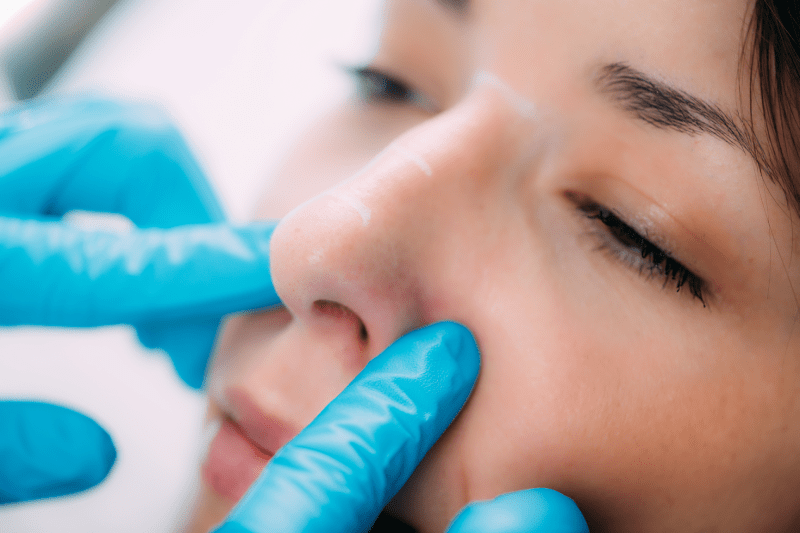
How Long Do Swelling and Bruising Last After Surgery?
Swelling and bruising after revision rhinoplasty can last longer and be more pronounced than after the first surgery. While bruising and significant swelling are observed in the first few weeks, it may take 3-6 months for the major swelling to subside. It may take 12-18 months for the final shape of the nasal tip to emerge and for all swelling to completely go down. It is very important to be patient and follow the doctor’s advice.
How Does the Post-operative Recovery Process Work?
The post-operative recovery process depends on the patient’s general health and the scope of the surgery. For the first week, a splint and/or bandages are placed on the nose. During this period, it is important to rest, keep the head elevated, and apply ice compresses. The splint is removed after one week and the patient can return to work. As the swelling decreases, the shape of the nose becomes more defined.
How to Choose the Right Surgeon for Revision Rhinoplasty in Istanbul?
Choosing the right revision rhinoplasty surgeon in Istanbul requires patience and research. One should pay attention to the candidate surgeon’s experience in revision rhinoplasty, their previous patient outcomes (before/after photos), the techniques used, and their communication with patients. The surgeon’s membership in a reputable organization such as the Turkish Society of Plastic, Reconstructive and Aesthetic Surgeons is also a good indicator.
What is the Anesthesia Preference in Revision Rhinoplasty?
Revision rhinoplasty is usually performed under general anesthesia. This allows the surgeon to work for a longer time and more comfortably while preventing the patient from feeling any pain or discomfort. Local anesthesia is rarely preferred due to the complexity of the surgery. General anesthesia allows the surgeon to meticulously complete all procedures while keeping patient safety at the highest level.
How Many Times Can Revision Rhinoplasty Be Performed?
Revision rhinoplasty can usually be performed one or two more times, but each additional surgery leads to the formation of new scar tissue in the nasal tissue and a decrease in the amount of available cartilage. This makes subsequent surgeries even more complex. Therefore, one should be very careful with each new surgery decision and choose the most experienced surgeons.
What is the Post-operative Care and Follow-up Process Like?
Post-revision rhinoplasty care is similar to the first surgery but can be more delicate. It is important to regularly use the nasal sprays and ointments given by your doctor, take care of nasal hygiene, and protect the nose from bumps. In the first year after the surgery, regular check-ups with your surgeon are critically important to monitor the healing process and intervene early in case of possible problems.
Can a Droopy Nasal Tip Be Corrected with Revision Surgery?
Yes, a droopy nasal tip can be effectively corrected with revision surgery. This condition usually occurs due to the weakness of the cartilage structures that support the nasal tip. The surgeon corrects this problem by using grafts taken from the patient’s own cartilage or artificial materials to reshape and support the nasal tip.
Can Breathing Problems Be Corrected After Surgery?
Yes, during revision rhinoplasty surgery, structural deformities that cause nasal breathing problems can also be corrected. The surgeon can help the patient breathe more comfortably by straightening deviations in the nasal septum, reducing nasal turbinates, or opening narrowed nostrils.
What is the Success Rate of the Surgery?
The success rate of revision rhinoplasty surgery is lower than that of the first surgery. Success largely depends on the surgeon’s skill and experience, the patient’s expectations, and the extent of the damage left by the first surgery. Therefore, open and honest communication between the patient and the surgeon is vital for establishing realistic expectations.
What Are the Advantages and Disadvantages of Using Rib Cartilage in Revision Rhinoplasty?
Rib cartilage is preferred in revision surgeries because it provides a large amount of material. Its advantages are that it is easily obtainable and can provide great structural support. Its disadvantages are the rigid structure of the cartilage, the possibility of a small scar remaining in the area where the cartilage is taken, and the potential for the cartilage to warp slightly over time.
Why Does the Nasal Tip Feel Numb After Surgery?
Since the nerves at the nasal tip are intervened with during the surgery, numbness or loss of sensation may be seen at the nasal tip after the operation. This condition usually improves slowly within a few months, and normal sensation returns as the nerves regenerate. The complete recovery process can vary from person to person.
Is There a Psychological Dimension to Revision Rhinoplasty?
Yes, revision rhinoplasty has a strong psychological dimension. Not being satisfied with the first surgery can cause disappointment and loss of self-confidence in the patient. Revision surgery offers a chance for both physical and psychological recovery and satisfaction. It is very important for the surgeon to correctly understand the patient’s expectations and to paint a realistic picture in this process.
What Should Be Considered Within the First Year After Surgery?
Within the first year after the surgery, it is necessary to protect the nose from direct sunlight, be careful with physical activities, and prevent the nose from being bumped. The nasal shape continues to settle during this period, so it is important to follow the massage and care routines recommended by your surgeon.
Is the Cost of Revision Surgery Higher Than the First Surgery?
Yes, the cost of revision rhinoplasty surgery is generally higher than the first surgery. This is due to the increased complexity of the surgery, the surgeon’s need to spend more time and skill, and sometimes the use of materials such as additional cartilage grafts. These factors can significantly increase the overall cost.
Is the Failure Rate of Revision Surgery Higher Than the First Surgery?
The failure rate of revision surgeries can be higher compared to primary surgeries. The main reason for this is that the surgeon is working with a nose that has been previously intervened with and has scar tissue. However, working with a surgeon who is specialized and experienced in revision rhinoplasty significantly increases the chance of success and minimizes the risk of negative outcomes.
Is Pain Expected in Revision Surgery?
Pain after revision rhinoplasty can be mild to moderate, similar to the first surgery. This pain can be easily controlled with painkillers that the surgeon will prescribe. Generally, the most intense pain is felt in the first few days and then rapidly decreases.
What References Should Be Trusted When Choosing a Surgeon?
When choosing a revision rhinoplasty surgeon, it is important to properly evaluate references. The before/after photos shared on the surgeon’s own website or social media accounts, as well as comments and experiences of former patients, provide important clues about the surgeon’s expertise. Furthermore, during the face-to-face consultation, it is also important to note how much time the surgeon dedicates to you and how clearly they answer your questions.
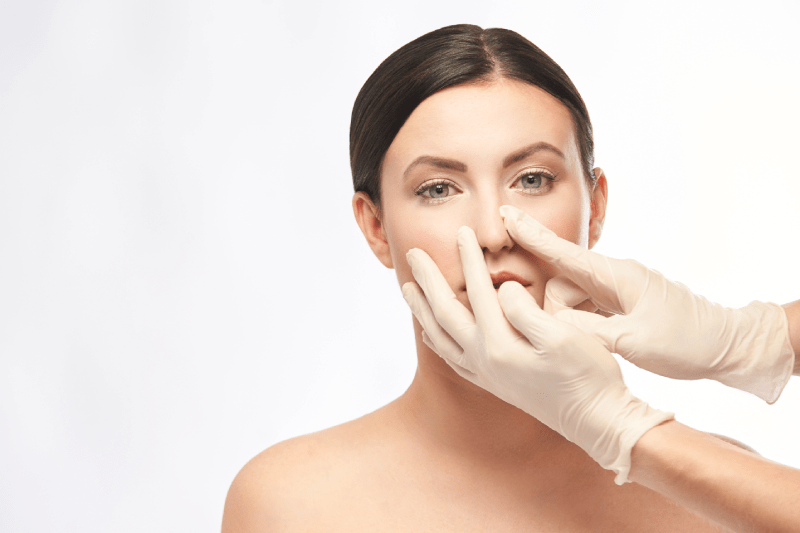
Does a Scar Remain After Revision Rhinoplasty?
If the open technique is used, a small scar may remain on the columella, the tissue between the nostrils. However, an experienced surgeon makes the incision in a way that allows this scar to fade over time and become almost invisible. When the closed technique is used, no external scar remains.
Do Internal Nasal Adhesions Form After Revision Rhinoplasty Surgery?
Adhesions (synechiae) can form inside the nose after revision surgery, but this is not a common condition. Adhesions form when two different surfaces inside the nose stick together during the healing process. To prevent this, it is important to keep the inside of the nose moist after surgery and to regularly perform the care recommended by the surgeon.
Can Aesthetic and Functional Problems Be Solved Together with Revision Surgery?
Yes, both aesthetic and functional problems can be solved at the same time with revision rhinoplasty. While improving the external appearance of the nose during surgery, the surgeon can also correct structural problems that cause breathing issues, such as a deviated septum, weak internal cartilage, or a narrowed nasal valve.
How Does the Pre-operative Consultation Process Work?
The pre-operative consultation is very important for understanding the patient’s expectations and what the surgeon can do. The surgeon evaluates the patient’s nasal structure, skin quality, and overall health status. Using computer modeling or 3D simulations, the possible post-operative results can be shared with the patient. This consultation is an opportunity for the patient to ask all their questions about the surgery and to resolve any doubts they may have.
When Do the Results of Revision Surgery Become Final?
The results of revision surgery become final, with the complete settling of the nasal tissues and the disappearance of all swelling, at the end of about a year. During this period, continuous changes can be seen in the nose. Therefore, it is important for patients to be patient and not to expect an immediate perfect result.
Why Should an Expert Be Preferred for Revision Rhinoplasty in Istanbul?
Choosing an expert for revision rhinoplasty in Istanbul is of vital importance due to the complexity of the surgery. An expert surgeon better understands the anatomical challenges and the effects of scar tissue created by the previous surgery. This increases the chance of success and minimizes the risk of re-operation.
Before having a revision rhinoplasty in Istanbul
It is critical to actively participate in this process in order to obtain a good outcome, which is dependent in part on how closely you follow your surgeon’s recommendations before to revision rhinoplasty. Any skilled surgeon would tell you that stopping smoking is not a good idea.
Furthermore, alcohol should be avoided 48 hours before taking blood thinners and for two weeks following surgery. Your surgeon may advise you to get further laboratory tests or medical assessments from other specialists. Because rhinoplasty might impact blood circulation, it is critical for diabetic patients to tell their doctors.
After having a revision rhinoplasty in Istanbul
Your nostrils may fall apart after 6-8 weeks of surgery, leaving slimy, bleeding, dry shells. Don’t go out of your way to tidy things up. As long as these don’t arrive, keep using your spray. When you first wake up, gently wipe your nose without squeezing it. 6-12 weeks after revision rhinoplasty, you may not smell as well as you did before. On its own, it will return to normal. However, if you’re very nervous, you can conduct coffee smelling exercises 1-2 times a day.
Revision Rhinoplasty Surgery Cost in Istanbul
The cost of revision rhinoplasty in Turkey varies depending on the technique used, the length of the procedure, the difficulty of the procedure, the surgeon’s expertise, hospital costs, and the country and city where the operation is performed.
Without inspection, determining a net price is impossible. There might also be pricing variations between cities. Different pricing may be found in cities such as Istanbul, Izmir, Ankara, and Antalya. What counts here is the surgeon’s experience. The patient’s physical state is also taken into account while deciding the cost of operation. Regardless, you may get revision rhinoplasty surgery in Turkey for the most inexpensive prices and have a great nose.
